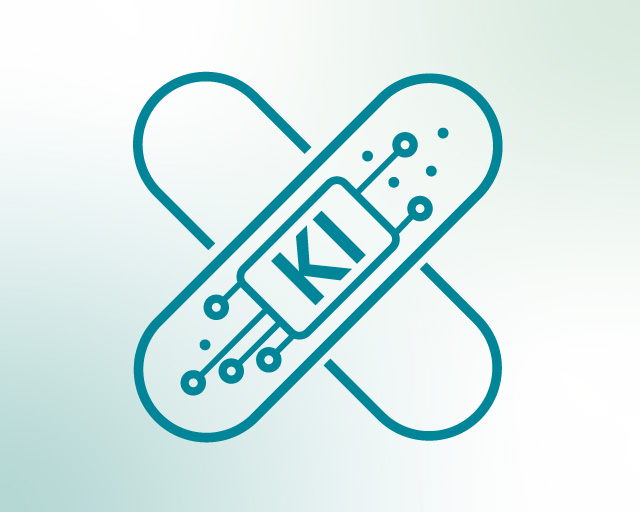
Project description
The KISMADI project has the objective of developing an innovative intelligent wound dressing that uses wireless sensor technology to record current wound conditions in poorly healing wounds, such as the diabetic foot. This data is transmitted to intelligent software that analyzes individual wound conditions and provides medical staff with recommendations for specific treatment. The aim is to efficiently support and even accelerate the healing process.
In the manufacturing process, an existing wound dressing (Fraunhofer ISC) is adapted with sensors (Fraunhofer IZM). These sensors are woven or spun into the tissue matrix. The surface is then treated with antimicrobial peptides (AMP, Fraunhofer IZI-BB) to prevent the formation of biofilms that could interfere with the measurement. The recorded data is transmitted to an AI (Fraunhofer FIT) via a wireless interface.
The wound cuff is designed as a single-use product so that the low-cost, flat and flexible sensor technology can be discarded after use, while the expensive electronics responsible for the wireless transmission of the signals are reused in an external cuff. This separation ensures, among other things, that the electronics do not have to be sterilized.
In the subsequent project phase, additional applications related to a wound event will be integrated into the AI-controlled system. This will help to comprehensively improve the patient's state of health.
A particular advantage of the KISMADI system is the location- independent evaluation of wound conditions by medical providers. The intelligent software is not tied to the patient's location, which is particularly important in rural areas. This ensures effective support with limited access to medical care.